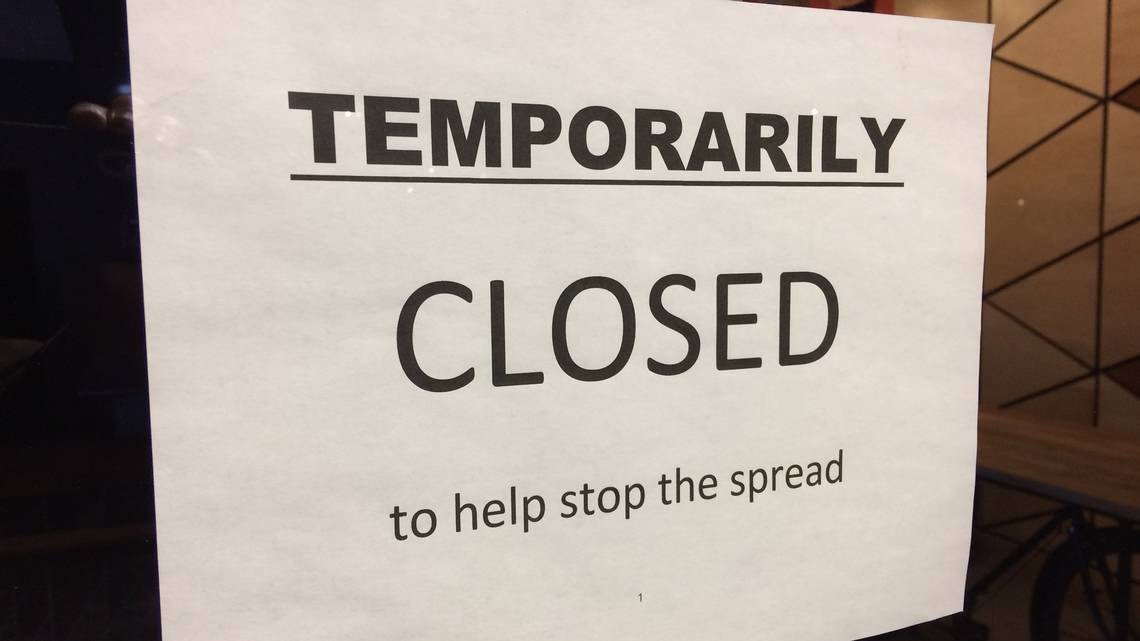Congress promised laid-off workers $600 a week. Idahoans haven’t got it yet. Here’s why
Published at | Updated at
BOISE (Idaho Statesman) — The surge in unemployment applications has overwhelmed the state agency that processes them and left thousands of jobless Idahoans wondering whether they will get the money they have been promised.
Nearly 96,000 Idahoans lost their jobs in the four weeks ending Saturday, April 11, many for the first time in their lives.
The onslaught is staggering. But unemployment in the coronavirus era isn’t like unemployment in the Great Recession, or the deep recession of 1981-’83, or even the Great Depression of 90 years ago, when one in four Americans were out of work.
The big difference in the COVID-19 pandemic is this: Most Idahoans who have lost jobs in the past five weeks expect to get them back.
A few are already being rehired. More seem likely to return after Gov. Brad Little’s newly extended stay-home order expires April 30. Little on Wednesday advised Idaho businesses that are still deemed “nonessential,” and are still closed, to prepare to resume operations May 1 if recent progress in bending the curve in virus transmissions continues.
CARES ACT APPROVED $600 WEEKLY PAYMENTS
But while they’re idle, most workers are supposed to get not only the regular unemployment compensation that laid-off Idahoans normally receive, but also an extra $600 per week. For that they can thank Congress for passing the Coronavirus Aid, Relief, and Economic Security Act. The CARES Act is a $2.2 trillion whopper of a stimulus bill designed to limit the economic damage the virus is wreaking.
Workers laid off the past few weeks don’t even have to endure the usual unpaid “waiting week” after a layoff before collecting jobless benefits.
All that is good news for them. The fattened unemployment payments will help them stay in their homes, buy groceries and pay their bills until their jobs return. It will also help the landlords, lenders and sellers whose businesses depend on their spending.
But a lot of that money has yet to be paid. Right now, all that laid-off workers are receiving is the regular state unemployment pay. No $600.
Why aren’t the $600 weekly checks being paid?
The state says its digital processing system was not designed for them.
State officials say they are testing changes to accommodate the supplemental payments. They say the money should start flowing by the end of April.
“We’re having to make significant adjustments to our system to accommodate these programs,” said Georgia Smith, a spokeswoman for the state Labor Department, in a phone interview.
I have never been on unemployment before. How much money will I get?
The basic, regular benefit ranges from $72 to $448 per week, depending on how much you earned while employed. The $72 is for a full-time, minimum-wage worker. That amount will stay put as long as Idaho’s minimum wage remains $7.25 an hour. The $448 maximum is based on Idaho’s median wage, and it fluctuates from year to year.
Once you qualify for regular unemployment, you’ll get the $600 per week along with your regular unemployment payments no matter how much or how little you made before your layoff. The $600 benefit is retroactive to March 29 and will end July 25.
For how long can I collect unemployment compensation?
That’s uncertain.
In normal times, if your employer laid you off with the expectation of rehiring you, you could collect for up to 16 weeks.
But the pandemic has made it hard for anyone to estimate reliably when you will be able to return to work safely. So the state is not now requiring your employer to commit to your return date.
“Everything is up in the air,” said Leah Reeder, an unemployment insurance technical services specialist for the Department of Labor, in a phone interview.
For long layoffs, the CARES Act includes money to pay for 13 weeks of extended benefits.
I have no employer. I work for myself, but I have lost most of my income. Can I get unemployment benefits?
Yes. But not yet. That’s another set of payments facing delay.
Idaho officials say their system wasn’t designed to serve self-employed people either, including contract workers and gig-economy workers like Uber and Lyft drivers.
That is because regular unemployment compensation is financed by a payroll tax on employers. The tax varies depending on the number of workers a business has and its history of claims by laid-off employees. Only employers pay unemployment taxes, not workers. A self-employed person with no employees pays no tax — and gets no benefits.
However, for the coronavirus pandemic, the CARES Act provides unemployment compensation to self-employed people whose earnings have tumbled. About 10,000 self-employed Idahoans have applied for these payments but have yet to receive them, the Labor Department says.
The state promises the cash will begin flowing once its technical issues are resolved and once guidance Idaho needs from the federal government is clarified. It says that might not be until May.
Meanwhile, state officials encourage you to go through the online application process to determine if you qualify. If you do, they say you’ll get a letter acknowledging that your payments are pending. The payments will be retroactive to your layoff date as far back as Feb. 2 and can continue as late as Dec. 26.
I was laid off, but my employer said nothing about unemployment compensation. Am I even eligible?
Sometimes employers have been known not to tell laid-off employees that they’re eligible. That could be from ignorance, oversight or a desire to keep the employer’s unemployment insurance taxes from rising.
The Labor Department treats even a one-week furlough as a layoff. So apply.
“This is what the program is here for — people unemployed through no fault of their own,” Reeder said. “Employers don’t want to see people having to move and find other jobs. This helps stabilize the economy. It’s there to help employers have a willing and active workforce when the economy gets better. This is why employers pay the taxes.”
4 KEY FACTS ABOUT IDAHO’S NEW LAID-OFF WORKERS
Most are women: 53% in the week that ended April 11. Before the pandemic, most were men. In the same April week of 2019, 62% were men.
Young workers are hit hardest: 47% percent of workers laid off the week ending April 11 were under 35. A year earlier, just 31% were. The main reason is the prevalence of entry-level jobs in hotels, restaurants and retail stores, which have lost most of their business.
Health-care workers have lost jobs: It may seem ironic that health-care workers are being laid off amid the pandemic, but elective medical services have been cut sharply. That affects dentists, eye doctors, anesthesiologists, sports medicine practitioners and their staffs, to name a few.
Manufacturing workers increasingly are joining the jobless ranks. They accounted for 11% of jobless claims in the week ending April 11, more than in prior weeks. Production and food-processing workers, assemblers and welders are hardest hit.
More current and past Idaho unemployment-compensation statistics are available on the state Labor Department’s dashboard at lmi.idaho.gov/ui-weekly-claims



